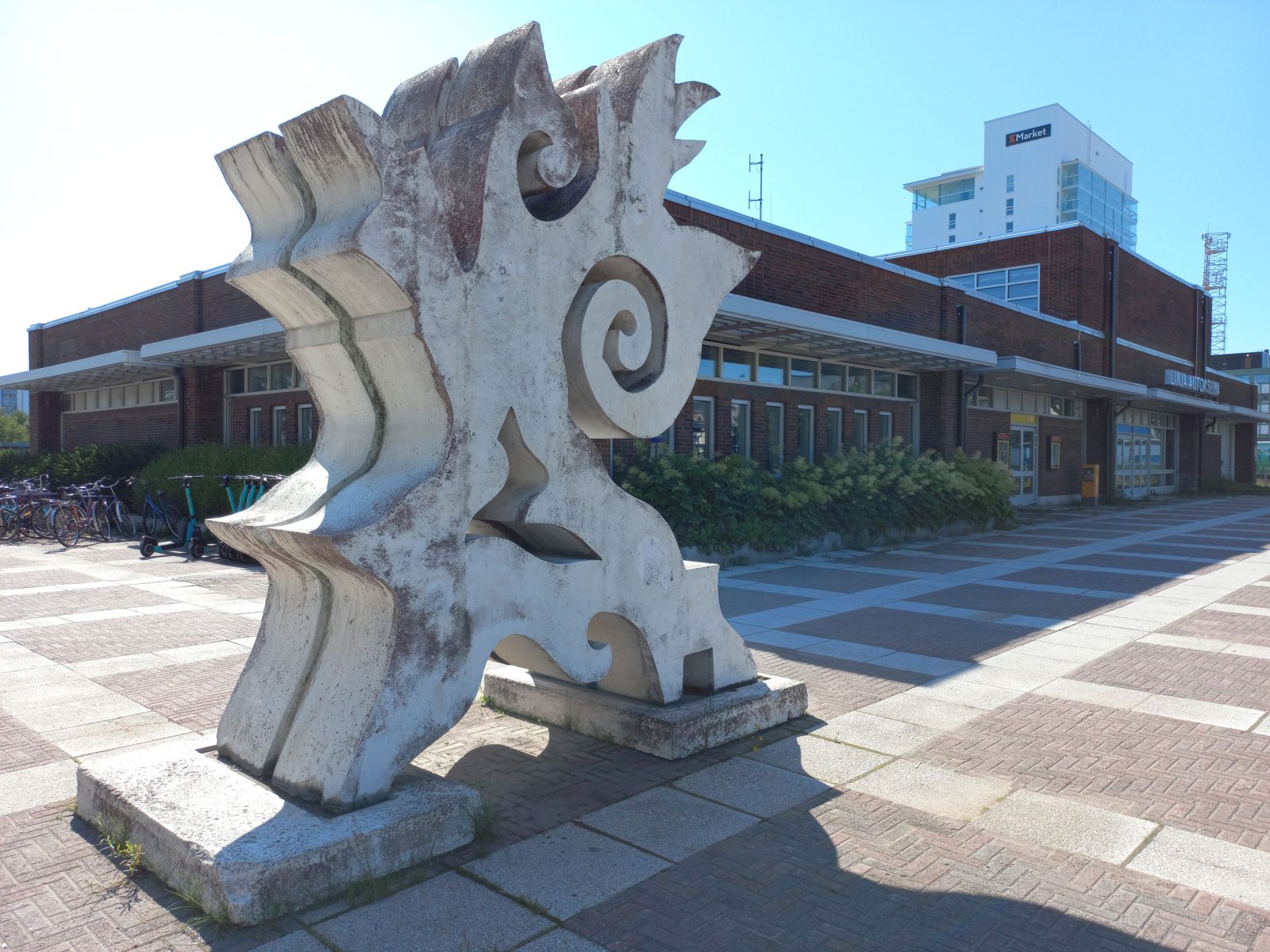The deteriorated white concrete sculpture has reached the end of its life cycle, which means it will be removed from the City of Oulu’s collection of public art.
Futura was completed in 1986 and was exhibited the same year at Helsinki Festival’s exhibition Concrete, part of the Experimental Environment series of environmental art events. The joint project between the Helsinki Artists’ Association and concrete industry companies involved ten artists. The production of the experimental sculptural elements in the exhibition was very different from the normal concrete plant work. Futura came to Oulu in 1987 when it was featured in the Sculpture Street exhibition on Rotuaari pedestrian street. It was acquired by the City of Oulu into its collections, and has since 1987 been located near the bus station on Ratakatu street.
The location of Futura has been a subject of debate throughout the 36 years that the sculpture has been in Oulu. Aiha himself was not happy with the placement. As recently as 2016, in an interview with the regional newspaper Kaleva, representatives of the Museum and Science Centre were thinking about the renovation and temporary relocation of the sculpture to make way for the construction work of the new travel hub. Since then, there has been no significant progress in the development of the station area.
White concrete is a challenging material for outdoor artworks, but Futura retained its original appearance for quite a long time, conveying the graphic whiteness and clear form that the artist intended. The work was based on an ornamental running dog theme. However, cracks extending into the structure due to multiple transfers and packing damage were observed in the sculpture as early as 1991. The gold-coloured joint between the sections also resisted the outside air poorly, disappearing from the surfaces in the 1990s.
Since 1999, the condition of the sculpture has been mapped by conservators from various sectors, and more extensive studies have been carried out in 2006 and 2023. It has not been possible to clean the artwork safely, and the accumulation of patina has been accepted. Cleaning the sculpture properly would have required moving it into an indoor cleaning space, but there were risks involved in the transportation.
In 2021, the sculpture was examined using non-destructive imaging techniques. According to the NDT studies, the concrete reinforcement was placed in such a way that the tips that diverge from the central section of the work were largely unreinforced. Cracks of various types were found at the tips, in the arms near the reinforced sections and especially at the bottom in the legs the sculpture stands on. The work and its base also show other signs of weathering, edge and corner chip, and street dirt. According to concrete experts, white concrete surfaces are particularly difficult to repair. If a decision re-coat the work had been made, the quality would have been compromised, making it difficult to predict the success of the final result. Although the concrete structure looks sturdy and heavy, it has become fragile over the years.
At its time, Futura was bought as a finished work. Today, when public artworks are commissioned, the life cycle of the work is always considered. Not all artworks are intended to last decades, let alone centuries. From time to time, public works in poor condition have to be removed because they are too difficult or too expensive to repair, technically inoperable or repeatedly vandalised, but the decision to remove them is always based on careful consideration.
In addition to Futura, the Oulu Art Museum collection includes six works by Martti Aiha from 1982–2009. One of the most famous is the steel sculpture Mediator (1999), donated by the newspaper Kaleva, in Snellman Park in the centre of Oulu. The marine aluminium sculpture Kenkä-Kekarainen outside Pateniemi school is a city-owned percentage artwork from 2009. Martti Aiha, born in Pudasjärvi, died in May 2023.
